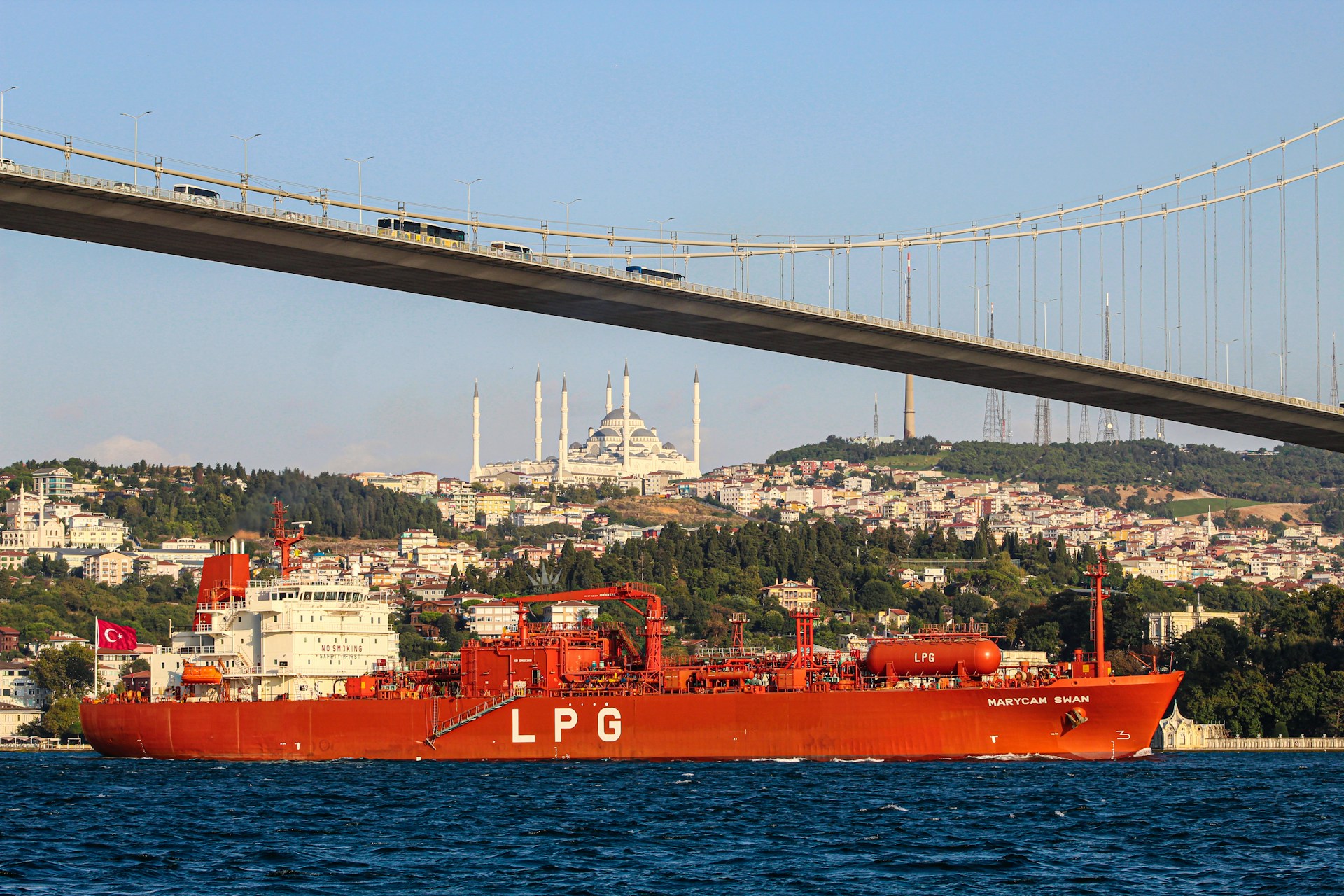The Impact of U.S. LNG Imports on Germany’s Gas Supply
Since the summer of 2021, a sharp rise in natural gas prices and the global energy crisis triggered by Russia’s invasion of Ukraine have severely impacted Germany’s industry. This led to a significant drop in production in energy-intensive sectors. Only this year, with the decline in energy prices, has there been a slight recovery in production levels, although they are still far from pre-crisis levels (Federal Statistical Office, 2024).
Importance of U.S. LNG for Europe
Russia’s aggressive war against Ukraine forced Germany and many other European countries to fundamentally reorganize their gas supply strategies. In 2021, Russian gas imports (via pipeline and LNG) accounted for 45% of the EU’s total gas imports. By 2023, this figure had dropped to just 14.8% (Pipeline: 8.7%, LNG: 6.1%) (European Council, 2024). The gap in gas supply was mitigated by a significant increase in imports of liquefied natural gas (LNG). The U.S., in particular, ramped up its LNG deliveries, accounting for nearly half of the LNG imported into Europe in 2023. Over recent years, the U.S. has emerged as the largest exporter of LNG globally (EIA, 2024) and is expected to maintain this position in the coming years (IEA, 2023). Nearly all of the global LNG supply growth between 2019 and 2023 can be attributed to the increase in U.S. exports, while supply from other countries remained nearly constant (Cedigaz, 2024).
Currently, the U.S. is the EU’s second-largest gas supplier (19.4%), behind Norway (30.3%). Germany, in particular, relies heavily on U.S. LNG. In 2023, 84% of the LNG supplied to Germany’s newly constructed LNG terminals on the North and Baltic Sea coasts came from the U.S. (BDEW, 2024). Additionally, Germany indirectly imported significant amounts of U.S. LNG via terminals in Belgium, the Netherlands, and France. Including these indirect imports, Germany received approximately 72 TWh of U.S. LNG in 2023, making up about 13.5% of its total gas imports.
While Germany’s dependency on U.S. LNG is not as high as it was on Russian supplies, the diverse supply sources for LNG terminals offer more flexibility than existing pipelines. Nonetheless, U.S. LNG has quickly become a crucial component of Germany’s and Europe’s gas supply, playing a significant role in the outlook for energy-intensive industries in Germany in the coming years.
U.S. Terminal Permit Halts
In January 2024, the U.S. government announced a temporary halt on new LNG export project permits. This decision was driven by the need to assess the environmental and economic impacts of increasing LNG exports. While sea-bound American exports were negligible until 2016, nearly 15% of U.S.-produced natural gas is now liquefied and exported as LNG. This figure could rise to 20-30% by 2030 (Center on Global Energy Policy, 2024).
Given this context, it is understandable to investigate whether the rising LNG exports have led to higher consumer prices in the U.S. and if this threatens the country’s climate goals. The local environmental impact of fracking, which is responsible for most U.S. gas production, is also under review. Additionally, electoral motives likely influenced this decision by the Democratic government, with the next election only months away. A November 2023 survey (Data for Progress, 2023) showed that there is broad bipartisan support among Americans for reducing LNG export volumes. Sixty percent of respondents supported limiting exports, while only 30% opposed it, with the primary concern being the potential rise in domestic energy prices.










